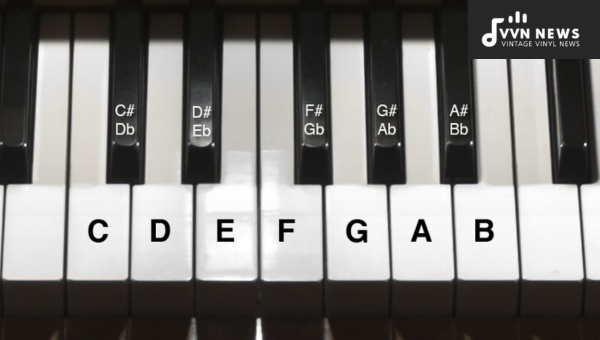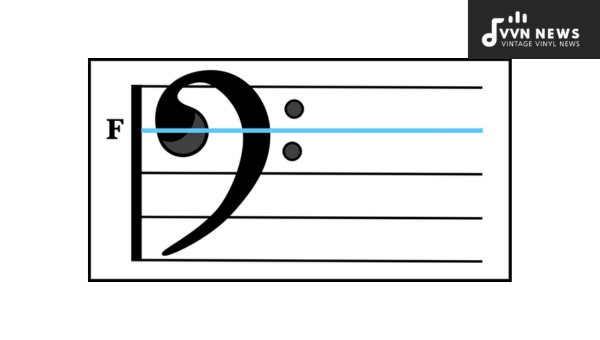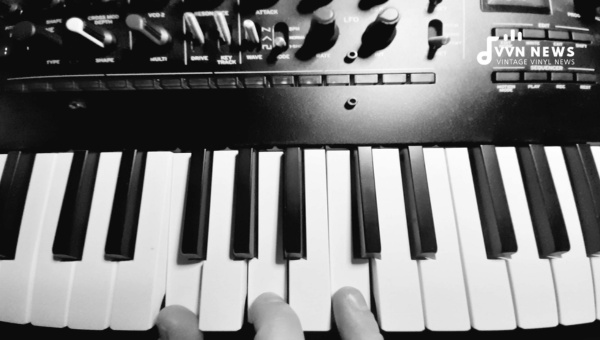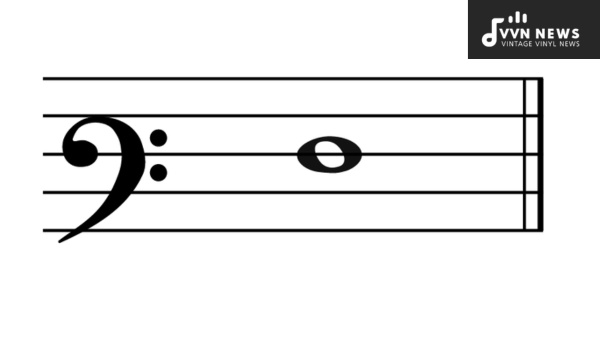When we talk about musical notation, the conversation often revolves around scales, chords, and the individual notes that are the building blocks of music.
One such essential component is the F music note—a pitch that can set the mood in a myriad of ways depending on its context.
I’ve come to realize that understanding this particular note can unlock new levels of appreciation for both musicians and listeners alike.
So, if you’ve ever found yourself enchanted by a beautiful melody or moved by a powerful harmony, there’s a good chance an F music note played a role in creating those feelings.
Its presence is subtle yet undeniable in compositions across genres, serving as a key player in the symphony of sounds that reach our ears.
Today, I’d like to share with you just how significant and versatile the F music note can be.
Identifying the F note on a music staff
Locating the F music note on a staff is crucial for reading sheet music effectively.
On the treble clef, F is found on the first space from the top, while in the bass clef, it is located on the second line from the top.
For beginners, associate this note with the mnemonic “Face” in treble clef where F is for ‘Face’, and “Good Boys Do Fine Always” in bass clef with F standing for ‘Fine’.
These simple memory aids are instrumental for swift identification and have stood the test of time helping countless students to master musical notation.
Visualizing the F Note on the Piano and Keyboard

The F note is a white key on the piano and keyboard that can quickly become your guide. It directly sits to the left of any group of three black keys. Here’s how to find it:
- Look at your keyboard and locate a set of three black keys.
- Identify the two white keys directly to the left; these are E and F.
- The first white key is E, while the second, snugly against it, is the F note you’re looking for.
When visualizing, remember that there are multiple F notes across a standard 88-key piano—each an octave apart.
They maintain a consistent pattern: wherever you spot those trio of black keys, an F lurks just a step away to their left.
Embracing this tip facilitates quicker identification and enhances your overall musical navigation.
Also Read: D Music Notes And Keys [Unraveling The Basics Of Guitar]
What Kind of Accidentals Can an F Note Have?
In the realm of music, accidentals are symbols that alter the pitch of a note. The F note is no different and can be modified in several ways.
Primarily, it can encounter three types of accidentals: sharp (F#), flat (Fb), and natural (just plain F when reverting back from a sharp or flat).
The Sharp F (F#)
When you see an F#, the F note is raised by a half step. On the piano, this would be the black key immediately to the right of an F, which is the same key as Gb (G flat).
This enharmonic equivalent means that while the keys and pitch are the same, the theoretical approach changes based on context in scales or chords.
The Flat F (Fb)
Conversely, an FB represents a half step down from a natural F. On instruments like piano and keyboard, you’d play E naturally since there isn’t a black key between E and F.
In written music though, specifying Fb instead of E has critical implications for harmonic structure and voice leading.
Natural Accidental
After an F has been altered by a sharp or flat within a piece of music, a natural sign may be placed before an F to indicate that it should return to its original pitch.
By altering these pitches with accidentals—much like adding spices to a dish—you enhance harmonic flavors and create more dynamic melodies.
Each accidentally furnishes composers with a richer palette for expressive storytelling through their music.
F Note Across Various Clefs

The F music note holds its own unique position in various clefs, which are used to indicate the pitch of written notes in sheet music.
Let’s explore how the F note is represented across these musical staves.
Treble Clef
In the treble clef, often used for higher-pitched instruments like the violin or flute, the F note is located in the first space from the top.
This is easily remembered with mnemonic devices such as “FACE,” where each letter represents a space-based note (F, A, C, and E).
Bass Clef
For lower-pitched instruments such as the cello or bass guitar, the bass clef comes into play.
Here, you’ll find the F note on the fourth line from the bottom—just above what musicians commonly refer to as ‘Middle C’. It’s easily spotted beneath the two dots that flank this line on either side.
Alto Clef
The alto clef positions middle C on its third line. The F note is found just a single line above, making it relatively easy for violists—an instrument frequently using this clef—to identify and play it.
Tenor Clef
With tenor clef boarding higher ranges akin to that of tenor voices or instruments like the bassoon in certain contexts, here you’ll spot middle C on its second line.
Consequently, you will encounter our friend—the F note—also residing a few lines up on the fourth.
Also Read: E Music Note Guide [Unlock Your Guitar’s Potential]
Mezzo-Soprano Clef
The mezzo-soprano clef places middle C on its second line from the top. The music notating for this clef isn’t as commonly used today, but here one would find our subject—the F note—on the space directly below middle C.
Soprano Clef
For musical works tailored to soprano voices or instruments catering to this range, middle C sits atop the first line, placing our focal point—the F note—squarely within reach just two lines below.
Baritone Clef
When dealing with baritone voices or certain brass instruments that prefer lower octaves without venturing too deeply into the bass territory, middle C aligns with this clefs’ third space from below.
One can spot our F music note dangling confidently at one step above in its corresponding fourth space from below.
In each of these unique placements across different clefs lies an opportunity for musicians to acutely understand and execute their craft precisely.
Being familiar with where an F music note falls within your specific context is critical—for it influences not only sight-reading fluency but also instrumental performance and vocal articulation amidst diverse compositions and arrangements.
Also Read: 12 Tips To Improve Your Low Notes On The Flute [Easy Strategies To Learn]
Well-Known Scales Beginning with F
Understanding scales is fundamental for any musician, and when delving into scales that begin with the F music note, you’re exploring a variety of tonal landscapes. The major and minor scales are arguably the most well-known, both offering a different emotional palette.
F Major Scale
At the heart of many cheerful and uplifting pieces lies the F major scale. It’s recognizable by its signature Bb note, distinguishing it from the C major scale which has no sharps or flats. Here’s what it looks like:
- F – G – A – Bb – C – D – E
Not only does this scale foster a sense of brightness, but it’s also a cornerstone in Western music education, often being one of the first major scales introduced to beginners.
F Minor Scale
Contrasting deeply with its major counterpart, the F minor scale encapsulates feelings of melancholy and introspection. In its natural form, it includes four flats:
- F – G – Ab – Bb – C – Db – Eb
However, you may encounter two more variations: The F harmonic minor (raising the seventh note) and the F melodic minor (raising both the sixth and seventh notes ascending, reverting to the natural form descending).
It’s these very scales that grant composers and performers the tools to evoke specific moods—a magic key that opens an array of expressive doors.
Modes Rooted in F

Exploring the modal system in music is like unlocking a treasure chest of sonic textures.
Each mode offers a unique flavor, and when rooted in the F note, they can breathe new life into your musical expressions.
F is not just a note; it’s the potential start of various auditory adventures.
The Ionian Mode – F Major
The Ionian mode on F creates what we commonly refer to as the F Major Scale.
Its series of whole and-half steps provides a sense of buoyancy and optimism.
With its sequence starting on F (F-G-A-Bb-C-D-E-F), this mode sets a foundation for countless melodies that resonate positively.
The Dorian Mode – F Dorian
Shift to the Dorian mode and you alter the mood. An F Dorian (F-G-Ab-Bb-C-D-Eb-F) brings about a jazzy or folk-like quality, introducing a minor feel with its flattened third but maintaining an element of brightness with its raised sixth.
Also Read: D Flat Music Note [Cracking The Code Of Musical Notation]
The Phrygian Mode – F Phrygian
Dive into the exotic sounds of the Phrygian mode beginning on F (F-Gb-Ab-Bb-C-Db-Eb-F) and you’ll encounter a darker, more mysterious atmosphere.
The half step between the first two notes gives it an almost Middle Eastern vibe.
The Lydian Mode – F Lydian
In contrast, F Lydian (F-G-A-B-C-D-E-F) uses a sharpened fourth to achieve an airy, ethereal sound that seems to float effortlessly.
This particular quality has found favor in film scores and otherworldly music pieces.
The Mixolydian Mode – F Mixolydian
Gravitating toward rock, blues, or country? Then the Mixolydian mode rooted in F (F-G-A-Bb-C-D-Eb-F) will serve you well with its dominant seventh chord feel—a staple in these genres.
The Aeolian Mode – F Minor
Also known as the Natural Minor Scale, starting this mode on F (F-G-Ab-Bb-C-Db-Eb-F) will immediately introduce you to an emotional soundscape that tends to evoke introspection or solemnity.
The Locrian Mode – F Locrian
Lastly, there’s the seldom-used but intriguing Locrian mode (F-Gb-Ab-Bb-Cb-Db-Eb-F).
This is your go-to for tension and unease because of its diminished fifth—a true standout that challenges conventional harmony.
Each mode conjures up different emotional responses and musical ideas just by altering intervals while keeping F as their tonal center.
They are not just theoretical concepts; they’re tools for creativity eagerly waiting for you to explore their distinctive characteristics.
Frequency Details of the F Music Note
The standard F music note—often referred to as F4 in scientific pitch notation—resonates at a frequency of 349.23 Hz.
This implies that when you hear an F4, the sound waves are vibrating 349.23 times per second.
It’s fascinating to note that frequencies can be affected by various tuning standards; however, the most widely accepted tuning pitch for this note is based on A4 being tuned to 440 Hz, which is known as Concert Pitch.
The frequency of any F note will vary depending on its octave, always either halving or doubling with each step-down or up, respectively.
Also Read: B Flat Music Note [The Basics Of Musical Notation]
FAQ: The F Music Note Unveiled
What does the F note represent in music?
The F note is a pitch in music, one of the base frequencies that makes up scales and melodies.
How do you identify an F note on the guitar?
To play an F note on a guitar, you typically press down the first fret on the 6th string or the third fret on the 4th string.
Does the octave matter when playing an F note?
Yes, octave placement affects pitch; a higher octave F sounds higher than one in a lower octave.
Can an F note be sharp or flat?
An F note can indeed be sharp (notated as F#) or flat (notated as F♭), slightly altering its pitch.
Why is middle C sometimes referred to as C4?
Middle C is often called C4 because it resides in the fourth octave of a standard 88-key piano and is near the middle of the keyboard.
Conclusion
The F music note is more than just a spot on the scale; it’s a foundational element that can evoke a breadth of emotions and set the tone of a piece.
Whether it stands alone as a poignant melodic point or blends into complex chords and harmonies, its versatility cannot be overstated.
You now have the insights to further explore and truly appreciate this harmonious gem within the world of music.
Remember, every note has its story – the F music note tells one that is both rich and resonant.








